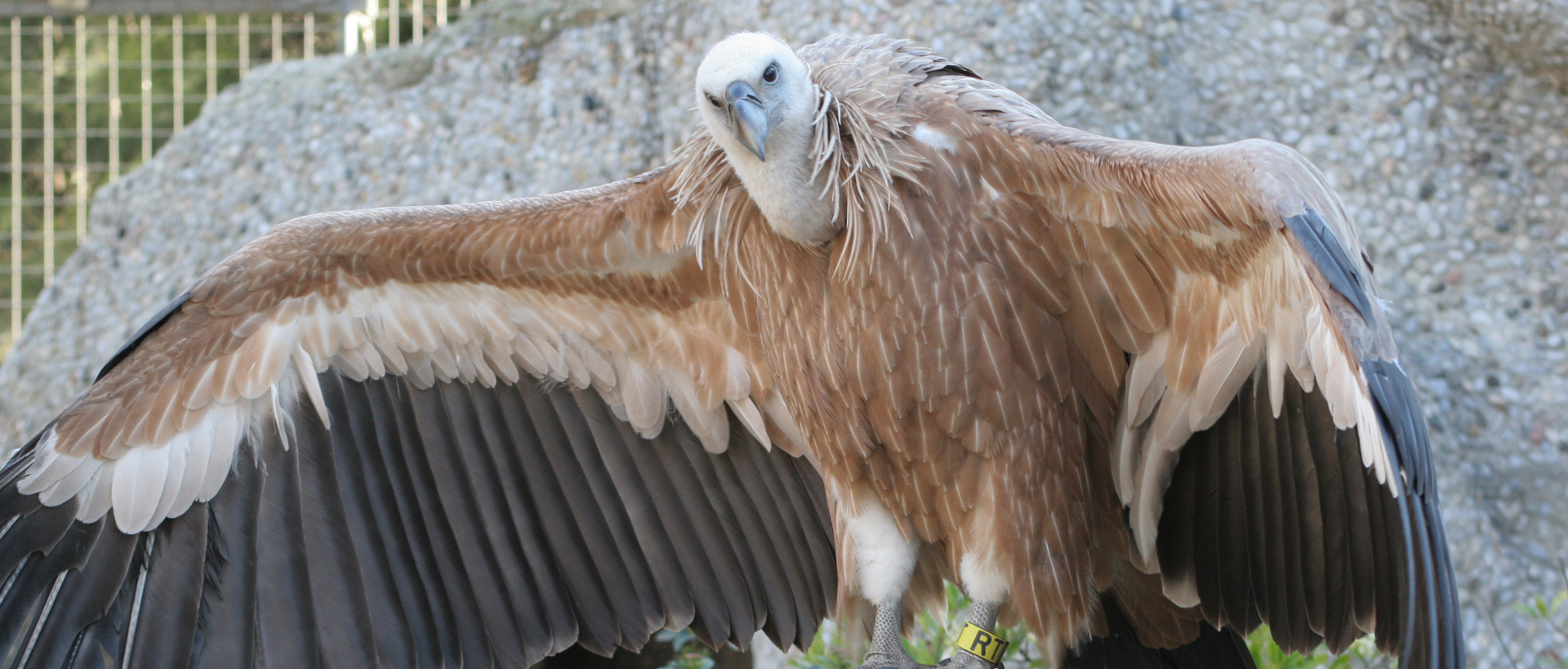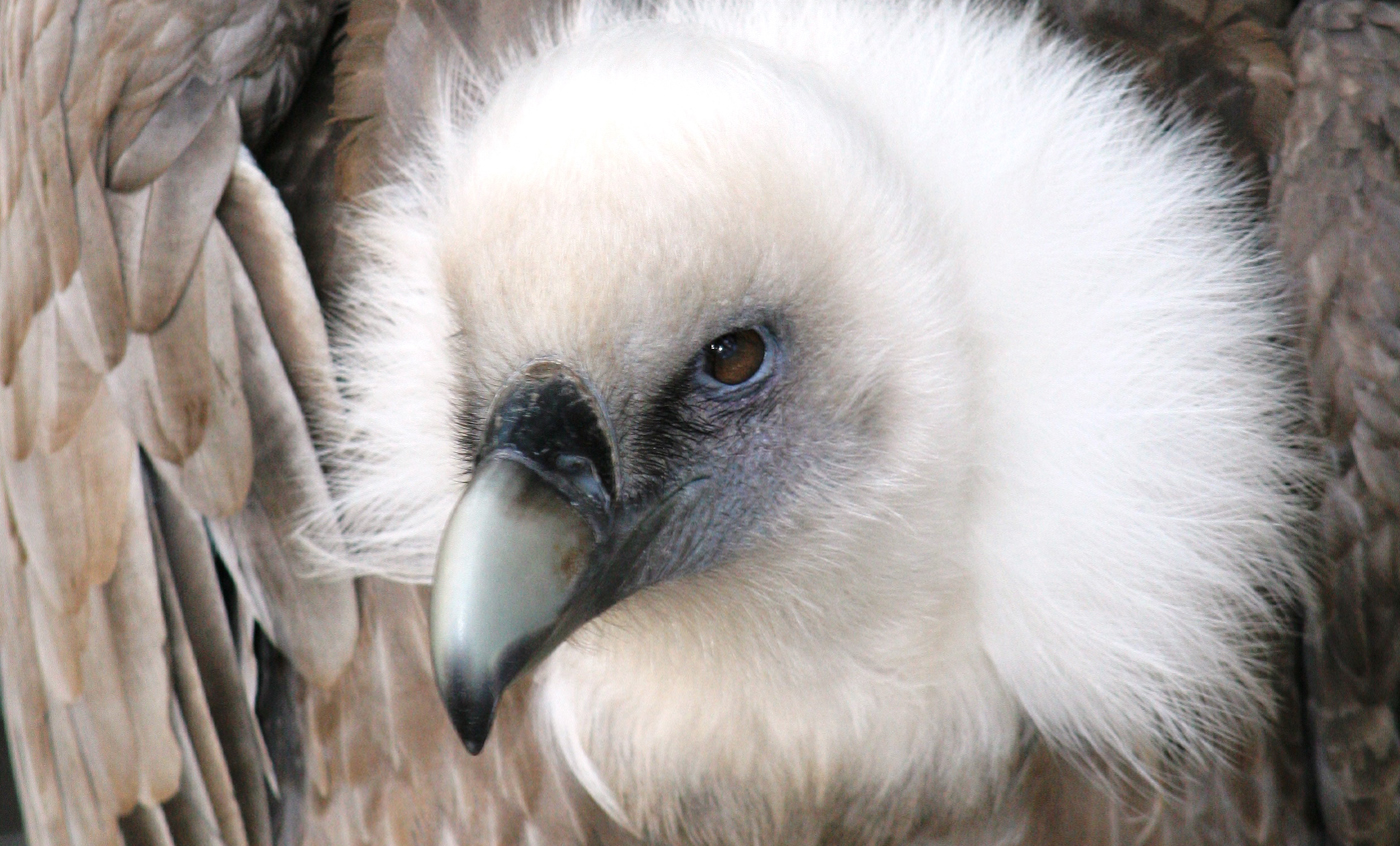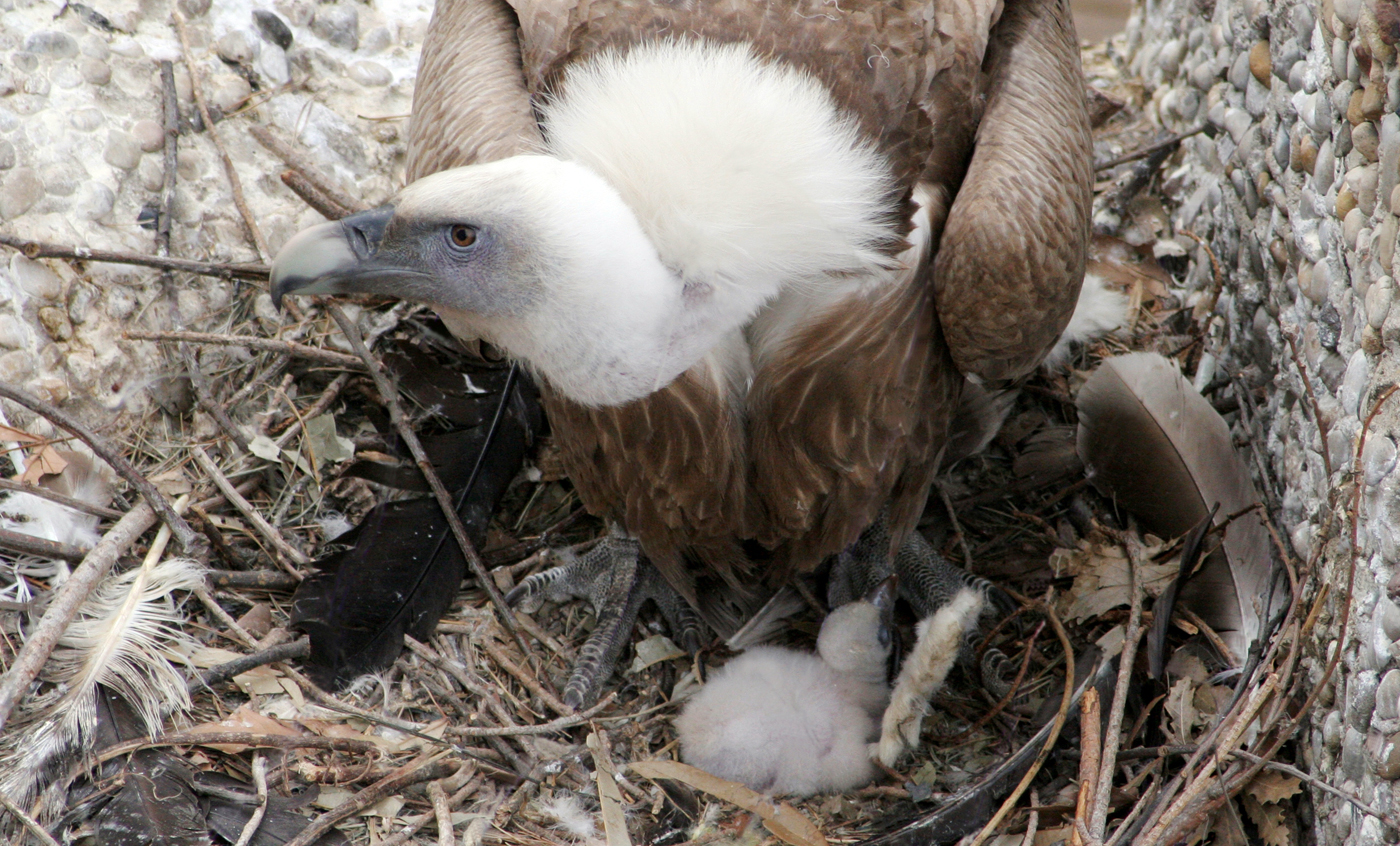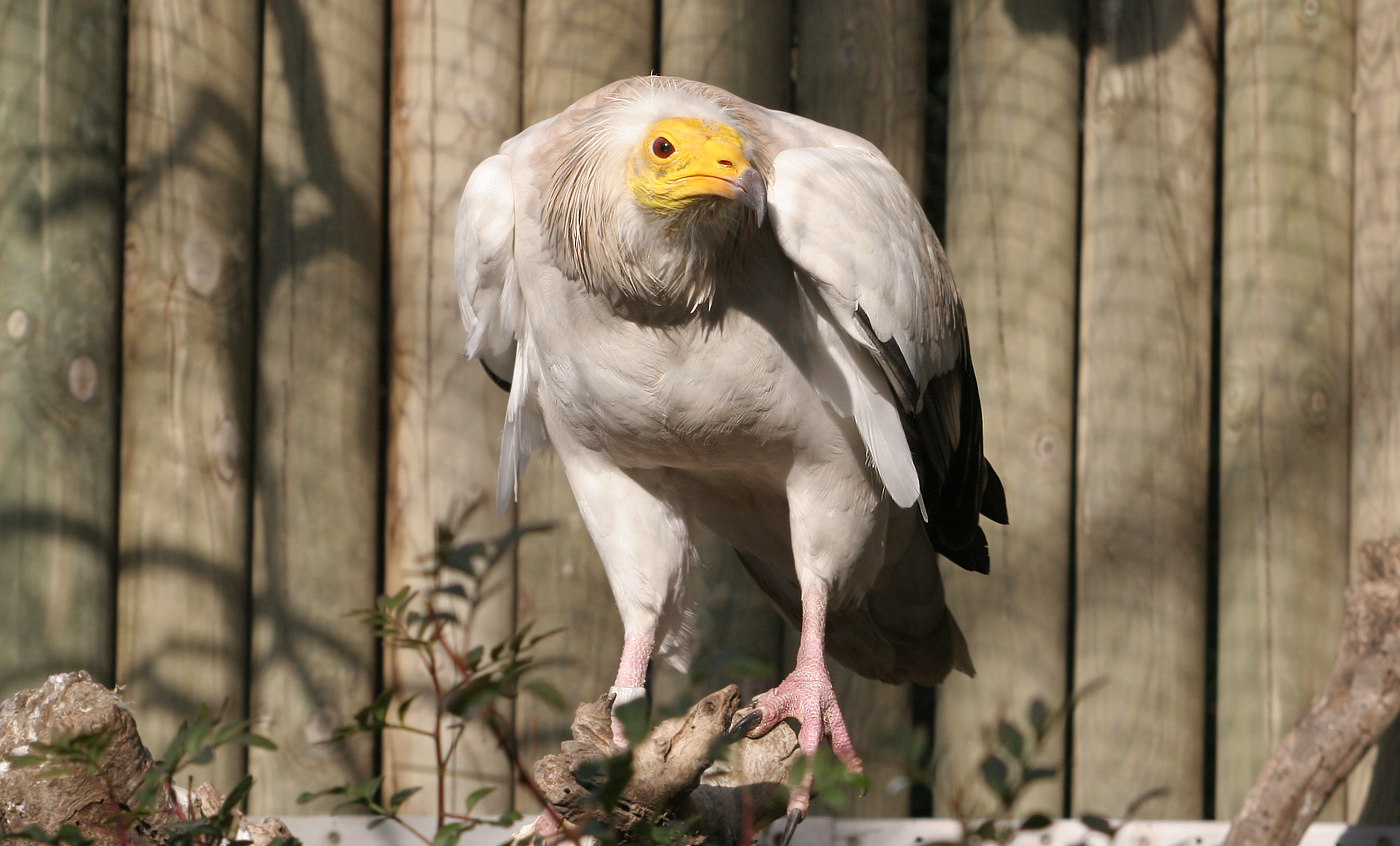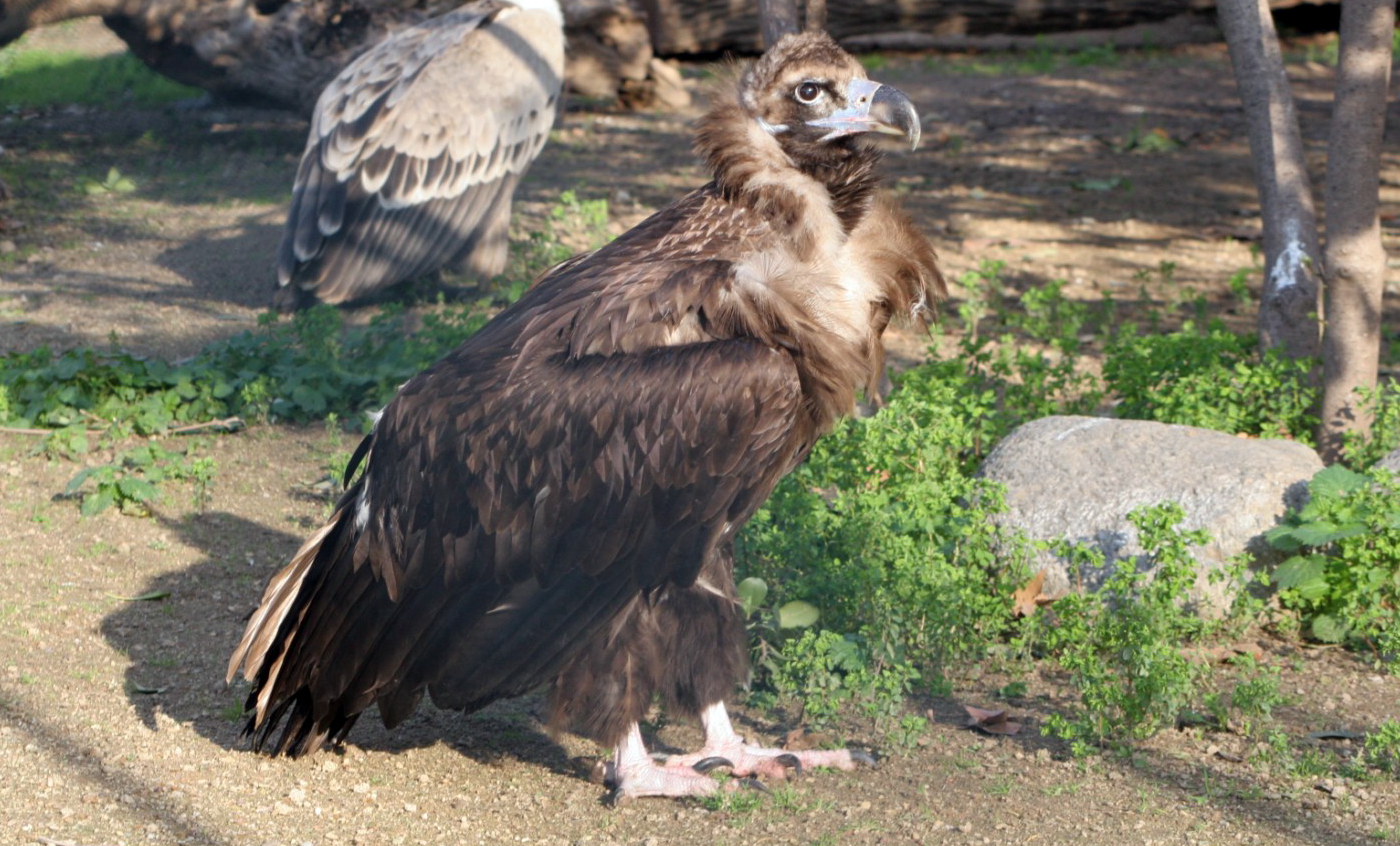Griffon vulture
A carrion-eater found on all types of terrain, preferably mountainous, from southern Europe and North Africa to central Asia. It lives in large breeding colonies in cliffs and each pair produces one single chick per season.
Changes in the use of land for agriculture and livestock, the use of poisons and hunting reduced their numbers greatly in the last century but nowadays their populations have recovered strongly in most areas.
Breeding program
Natural habit
Southern Europe and North Africa to central Asia.
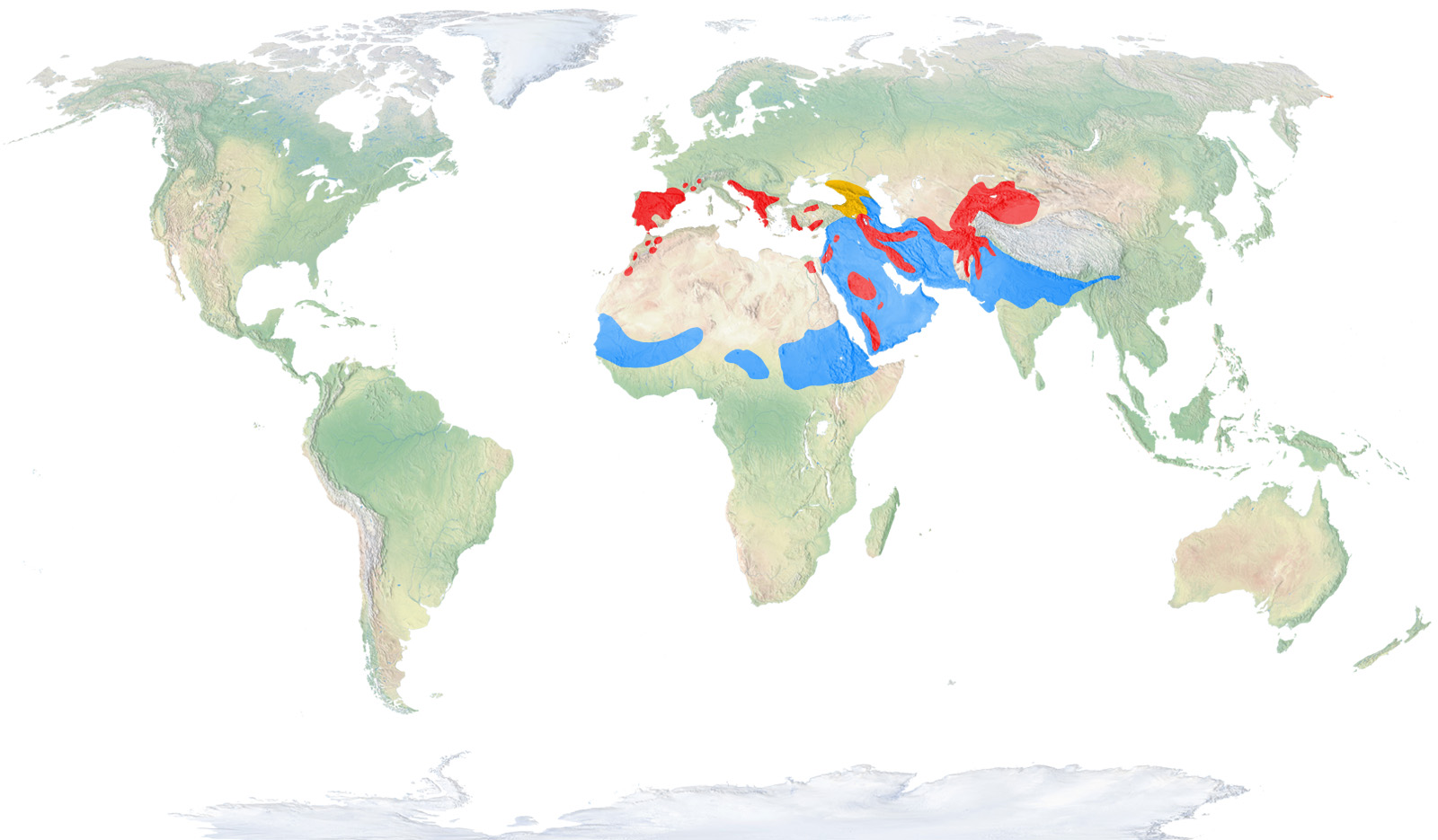
- Distribution / Resident
- Breeding
- Wintering
- Subspecies
Risk level
- Extint
- Extint in the wild
- Critically endangered
- In Danger
- Vulnerable
- Near threatened
- Minor concern
- Insufficient data
- Not evaluated
Taxonomy
Physical characteristics
Biology
Reproduction
Biology
With light-brown plumage, a wingspan of some 2.5 metres and a weight up to 9 kg, it is one of the largest birds in Europe and also one that lives the most years.
The wings are long and broad, with black flight feathers and black short tail feathers. The primary feathers at the ends of the wings are very separated, almost like fingers. The head and neck are featherless, covered with a greyish-white down, an adaptation to be able to easily put its head inside cadavers.
It occupies all types of terrains, preferably mountainous ones in southern Europe and North Africa to central Asia.
Exclusively a scavenger, it specialises in eating large ungulates, both wild and domestic, with the provision of this diet closely connected to human beings in our country.
They are monogamous, forming stable couples that stay together for life. They build nests in quite large colonies, depending on the resources provided in the region, on cliffs and sunny rocky walls, normally under cornices, to protect them from wind and rain.
They lay eggs in January or February in our region, consisting of a single egg that is incubated by both members of the pair. The incubation shifts can last up to 48 hours, during which the adult can fast without any problem.
In our country, agriculture and livestock, direct hunting and the uncontrolled use of pesticides in fields drastically reduced the numbers of Griffon vultures. However, in the last decades of the last century, strict protection, a ban on using poisons in nature and the creation of artificial feeding grounds have favoured their recovery.
However, the resurgence of the use of poison, collisions with power lines and the blades of wind turbines and the strict application of health standards with respect to livestock carcasses left in the countryside are all limiting the stabilisation of the population. The Barcelona Zoo participates in this species’ ESB.




